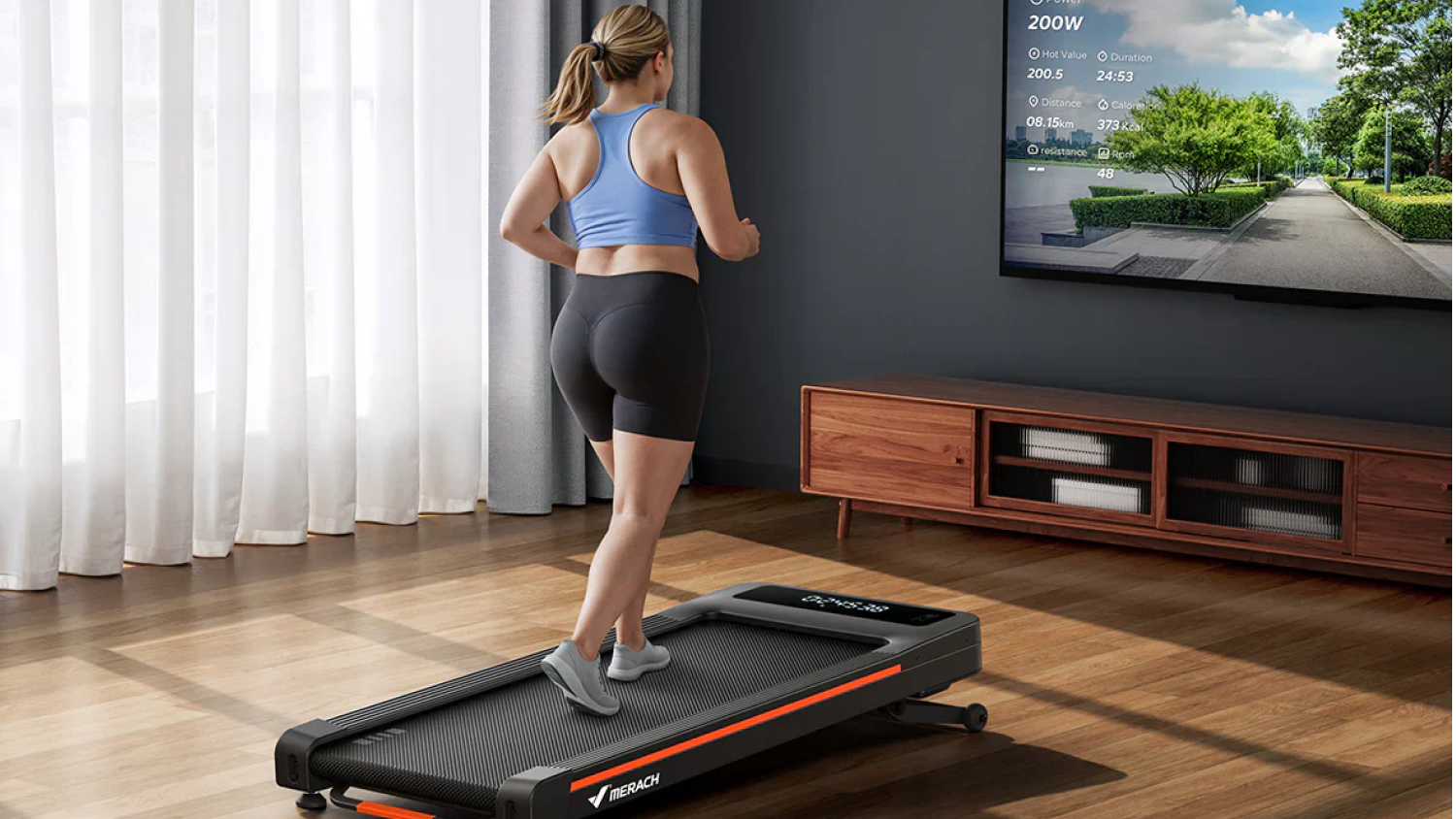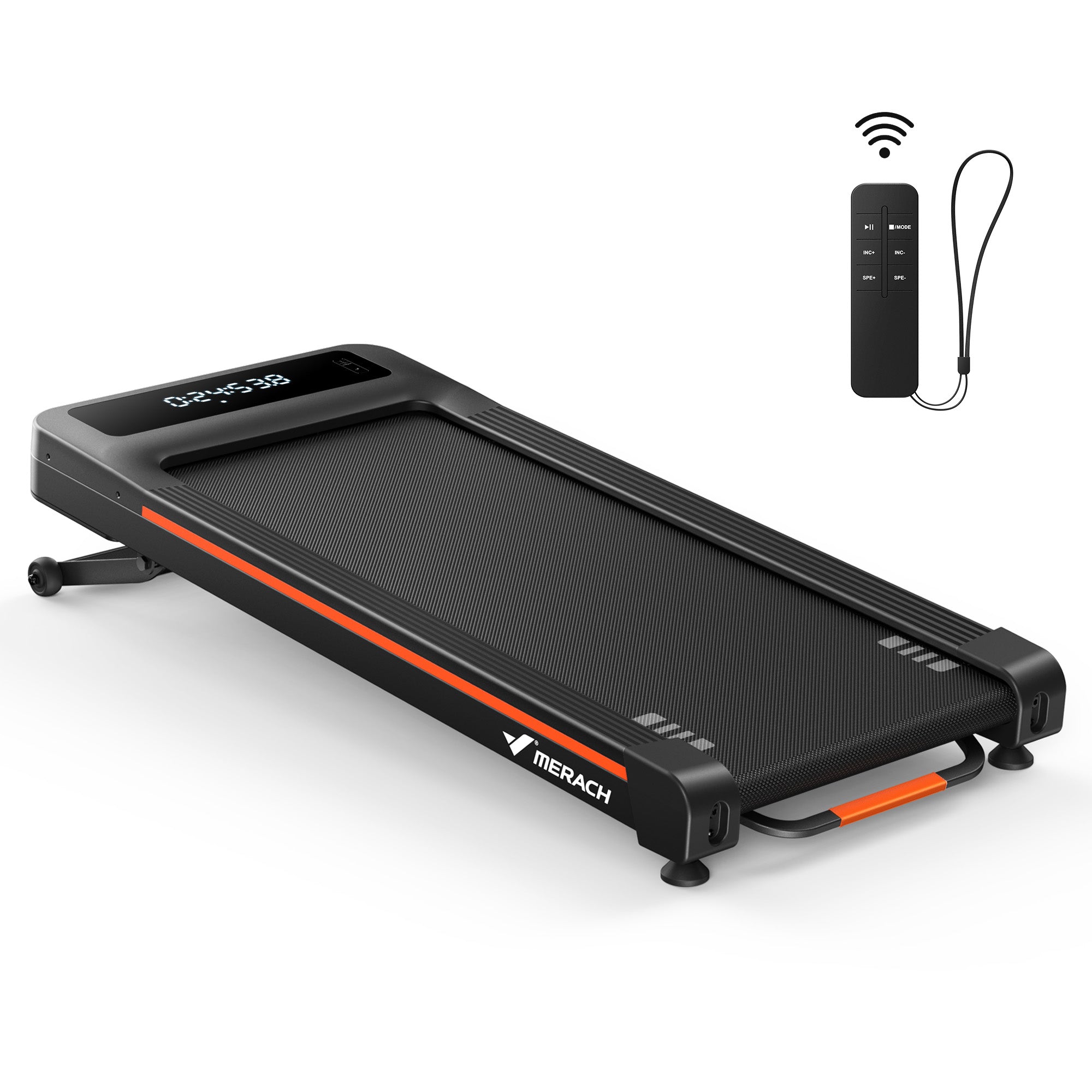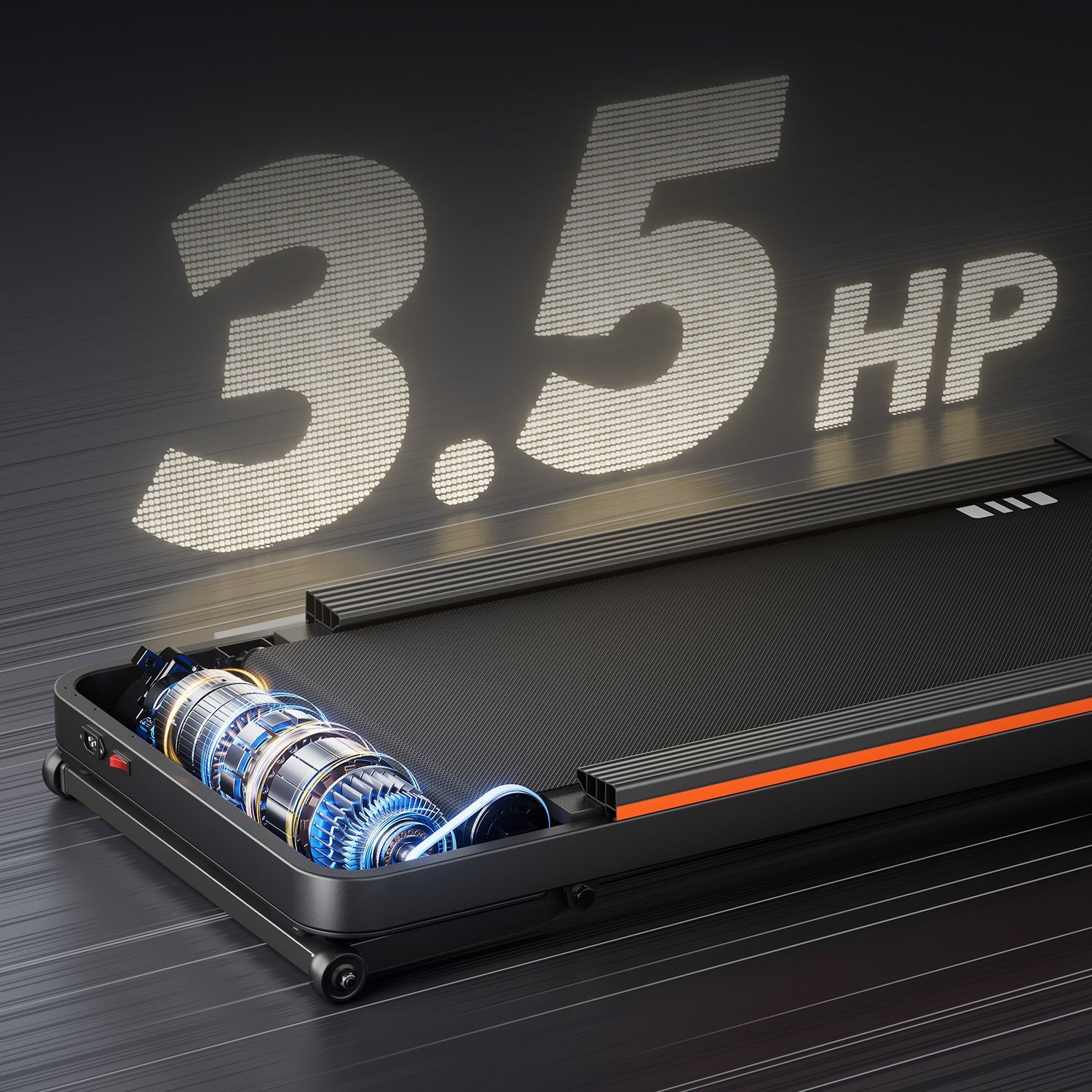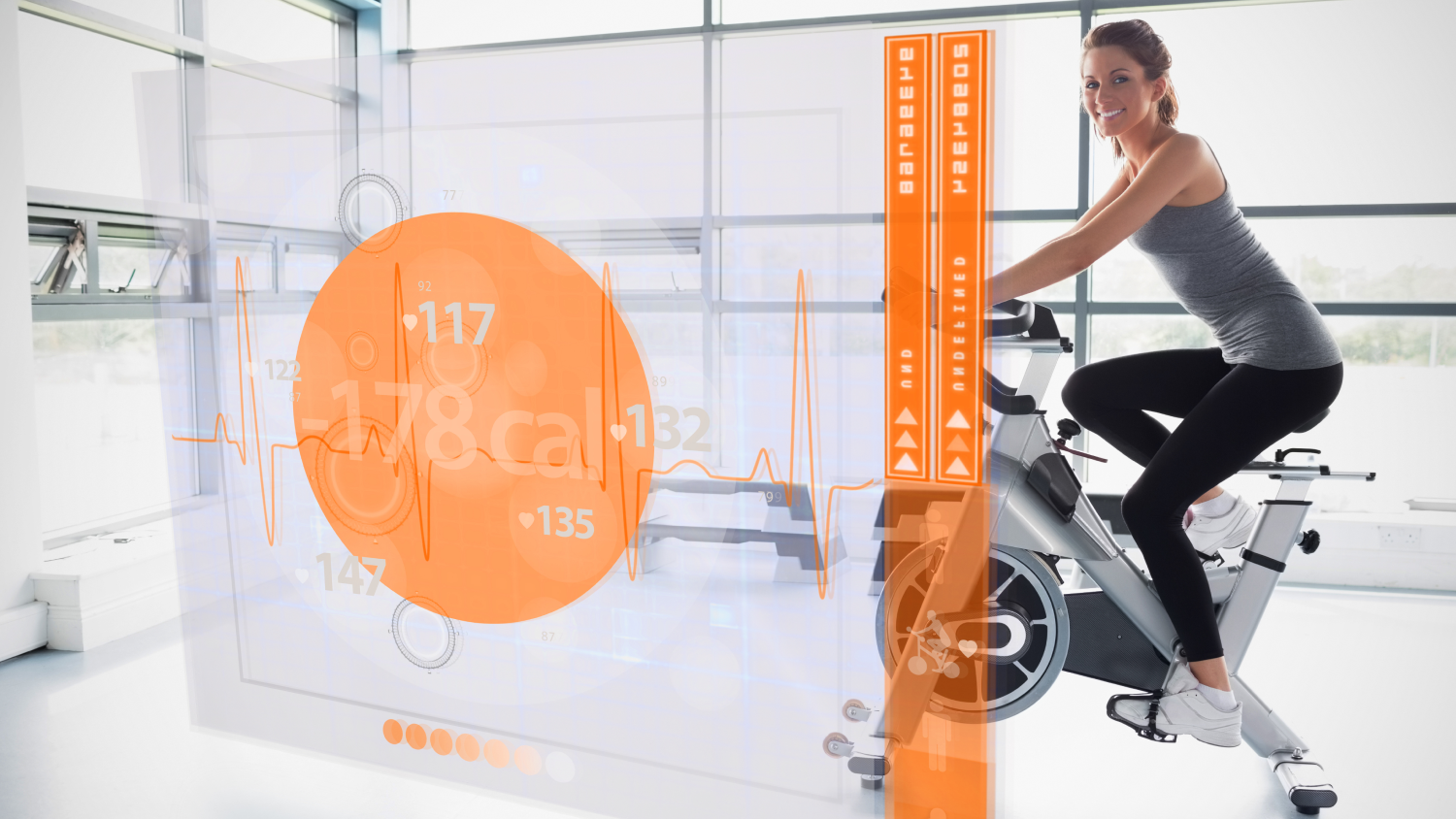In today's fast-paced world, finding time for regular exercise can feel like a constant battle. You face the dilemma of balancing work, family, and sports, and often, physical activity is the first thing to be sacrificed. For heavier people, the challenge doubles. Much fitness equipment feels flimsy, has low weight limits, or breaks down quickly. The goal of weight loss can feel unattainable.
That's where walking pads come in. This compact and convenient home fitness tool has rapidly gained popularity. But does it really work? Do walking pads help lose weight? Can a walking pad help you achieve your weight loss goals?
In this guide, you'll find the answers. Keep reading to find out how many calories walking pads can help you burn, how to make every step count, and the suitable walking pad for heavy people.
1. How Many Calories Does a Walking Pad Burn?
Unlike high-intensity exercise, steady, prolonged walking uses a higher proportion of fat as fuel. It is called a low-intensity steady-state cardio exercise, which is less stressful on the joints and can be sustained for longer periods, resulting in a higher total calorie expenditure throughout the day.
According to the American Council on Exercise, walking at a moderate pace burns approximately 200-300 calories in 30 minutes. Over time, these consistent calorie burns add up. When combined with balanced nutrition and daily activity, walking can be an effective and sustainable way to lose weight.
| Equipment | Average calories/hour (3.5 mph) | Space required |
|---|---|---|
| Walking Pad | 280-350 | Minimal |
| Treadmill | 300-380 | Large |
| Outdoor Walking | 270-330 | None |
From the table, we can see that the calorie burn of these three methods is quite similar. However, the walking pad is more convenient and is also relatively more affordable than a treadmill. Considering both cost-effectiveness and sustainability, weight loss with walking pads is a better choice.
Factors of Calories Burned on Walking Pads
The exact number of calories you burn on a walking pad depends on several key factors: your body weight, the speed at which you walk, the duration of your session, and whether you use the incline.
- Body weight: People with higher body weight tend to burn more calories per minute because their bodies need more energy to move. For instance, someone who weighs 200 lbs can burn about 25-30% more calories than someone weighing 150 lbs when exercising at the same speed and duration.
- Speed & Duration: The faster and longer you walk, the greater the total calorie expenditure. It's a simple principle, but the key is consistency. A daily 45-minute walk is much more effective than a sporadic high-intensity session.
- Incline: Walking pad with an incline simulates walking uphill, which activates more muscles, especially glutes and calves, and significantly increases calorie burn. A just 5% incline can boost your calorie expenditure by up to 30-40% compared to walking on a flat surface at the same speed.
To give you a clearer idea, here is a reference table estimating the calorie burn per hour for a 70 kg person:
| Speed (km/h) | Incline | Calories Burned (per hour) |
|---|---|---|
| 3.2 km/h (2 mph) | 0% | 175-210 kcal |
| 4.8 km/h (3 mph) | 0% | 245-295 kcal |
| 6.4 km/h (4 mph) | 0% | 315-375 kcal |
| 4.8 km/h (3 mph) | 5% | 350-420 kcal |
| 6.4 km/h (4 mph) | 5% | 400-480 kcal |
Note: These are estimated values. Your actual calorie burn may vary.
To understand the effectiveness of your exercise, here's the MET-based formula commonly used to estimate calorie burn:
Calories burned (kcal) = MET × 3.5 × body weight (kg) ÷ 200 × duration (minutes)
In this formula:
- MET represents the Metabolic Equivalent of Task, which indicates the intensity of an activity.
- 3.5 refers to the average oxygen consumption per kilogram of body weight per minute(mL/kg/min).
- 200 is a constant that converts oxygen use into kilocalories.
- Body weight is measured in kilograms, and duration in minutes.
In general, sitting equals about 1 MET, while walking at 2 mph is roughly 2.5 METs. A brisk walk at 4 mph increases that to around 4.5 METs. This means that by walking briskly you are burning 4.5 times more calories than if you were sitting. Simply turning sedentary time into active time can significantly boost your daily energy expenditure without requiring much extra effort.

2. Best Walking Pad for Heavy People to Lose Weight
When selecting a walking pad for weight loss, particularly for heavier people, durability and stability are crucial. Here are the essential features to consider:
- Maximum weight capacity: This is the most important factor. Look for a heavy duty walking pad that exceeds your current body weight by at least 40-60 lbs to ensure safety and machine longevity.
- Powerful motor: A higher horsepower motor ensures the machine can move the belt smoothly and consistently without overheating or failing under a heavy load. 3.0 HP motor or more peak is ideal.
- Reinforced frame and cushioning: A thick walking deck and a quality cushioning system are essential for absorbing impact and protecting your joints. 15mm+reinforced decks prevent flexing.
- Wide walking belt: A wider belt offers a larger safety surface, allowing you to walk confidently without worrying about stepping off the machine.
Based on the considerations mentioned, we recommend the Merach NovaWalk W50 400 lb Capacity Walking Pad. Powered by a 3.5HP brushless motor, it won't shut down mid-workout. The treadmill-grade motor and 15.3mm reinforced base plate provide robust support, preventing wobbling or damage. The 400lbs weight capacity is exceptionally rare among treadmills, ensuring long-lasting durability and reliability. The wide running belt delivers a more stable and comfortable workout experience without the worry of safety.
I came across the case of a user who weighed 330 lbs and was hesitant to buy a walking pad for fear that it wouldn't support his weight. When he finally invested in the Merach W50, his life changed. He started by walking just 15 minutes a day at 1.2 mph. After six months, he was walking 60 minutes a day at 2.5 mph with a 5% incline. Not only did he lose 44 lbs, but most importantly, the walking pad removed the barrier of "I don't have time."
So whether you're a beginner looking to start your fitness journey or want to lose weight steadily, the high weight capacity walking pad will cover your needs.
3. Tips to Maximize Weight Loss With a Walking Pad
Buying a walking pad is only the first step. For the walking pad for weight loss to be truly effective, you must integrate it smartly into your daily routine. Here are practical and proven tips to maximize your walking pad weight loss results.
Lifestyle Integration
The biggest advantage of a walking pad is its convenience. You can use it anytime, whether at home or in your office.
- Walk while you work: Place your walking pad under a standing desk. Try walking at a low speed while checking emails or participating in meetings. This can easily add extra steps a day effortlessly, which translates directly into a greater calorie deficit.
- Short, frequent sessions: You don't have to do an hour-long walk. Three 20-minute sessions throughout the day are just as effective at burning calories and keeping your metabolism active. The key is accumulation.
- Walk while you watch TV: Replace couch time with walking pad time. An hour of your favorite show turns into an hour of calorie burning. This simple change can be the deciding factor in reaching your goals.

Diversified Training
To prevent your body from getting used to the same routine, you must vary the intensity of your workouts.
- Set daily step goals: For example, aim for 8,000 to 10,000 steps a day. If you are already taking 3,000, use the walking pad to cover the remaining 5,000 to 7,000.
- Use the incline: If you have a model like the Merach W50 with auto incline, use it. Walking at 3 mph with a 5% incline burns significantly more calories than walking at 4 mph on a flat surface. It also strengthens leg and glute muscles, which contribute to a faster metabolism.
- Speed intervals: Introduce small bursts of intensity. For example, walk 3 minutes at 2 mph and then 1 minute at 3.5 mph. This speeds up your heart rate and increases post-exercise fat burning.
- Add resistance: If you feel comfortable, try walking with a lightweight vest or holding 2-4 lb dumbbells. This increases muscle demand and, therefore, calorie burn.

Balanced Diet
The walking pad helps you create the calorie deficit, but nutrition determines the quality of that deficit. No amount of exercise can compensate for a poor diet. Focus on whole foods, lean proteins, and vegetables. Stay hydrated and rest.

4. How Soon Can You See Walking Pad Weight Loss Results?
You are investing time and effort in your walking pad to lose weight, so it is natural to ask: "When will I start seeing results?" Healthy and sustainable weight loss is generally between 1 and 2 pounds per week. To achieve this, you need a weekly calorie deficit of approximately 3,500 to 7,000 calories.
If you burn around 300 calories per session and maintain a mild calorie deficit of 500 per day, you can lose about 1 pound of fat every week. Over three months, that could add up to 10-12 pounds of healthy, sustainable weight loss.
Weight loss with a walking pad doesn't happen overnight. It's a gradual process, but consistency always pays off.
5. FAQs about Walking Pads
Here are answers to some of the most common walking pad questions to help you make an informed choice.
Q1:Are walking pads worth it?
Yes, a walking pad is worth it, especially if you have a sedentary lifestyle or are looking for a low-impact, high-convenience form of exercise. You don't have to worry about the weather, gym clothes, or travel time. By allowing you to walk while you work, watch TV, or read, it converts "dead" time into active time, making it even more valuable in the long run.
Q2: Can you jog on a walking pad?
It depends on the model. Most affordable walking pads are designed for walking, with a maximum speed that usually ranges between 2.5 mph and 4 mph. More basic models are not designed for the impact of jogging and could be damaged or overheat. However, the Merach W50 Walking Pad is built with a treadmill-grade motor and a reinforced frame. Its superior robustness and cushioning allow you to perform a gentle jog without the risk of damaging the machine.
Q3:Are walking pads loud?
One of the biggest concerns when buying home exercise equipment is noise, especially if you live in an apartment or plan to use it while working. Modern walking pads, especially those with brushless motors, are remarkably quiet. The noise you hear primarily comes from the sound of your feet hitting the belt, not the motor. If noise is a primary concern, be sure to choose a model with a powerful and quiet motor, as weak motors often have to strain harder, generating more noise and heat.
6. Conclusion
So, do walking pads help lose weight? Absolutely yes. They are a powerful home fitness machine that allows you to overcome the barrier of time and space. By incorporating daily walking into your routine, you can burn calories, improve endurance, and support long-term health without expensive gym memberships.
If you're a heavier user looking for an affordable yet high weight capacity walking pad, the Merach W50 Trekpad is an excellent choice. This 400 lbs capacity walking pad provides a comfortable and secure walking experience for all users, including heavier people. Don't let your weight or lack of time prevent you from reaching your health goals. Start your weight loss journey now!
































Leave a comment
All comments are moderated before being published.
This site is protected by hCaptcha and the hCaptcha Privacy Policy and Terms of Service apply.